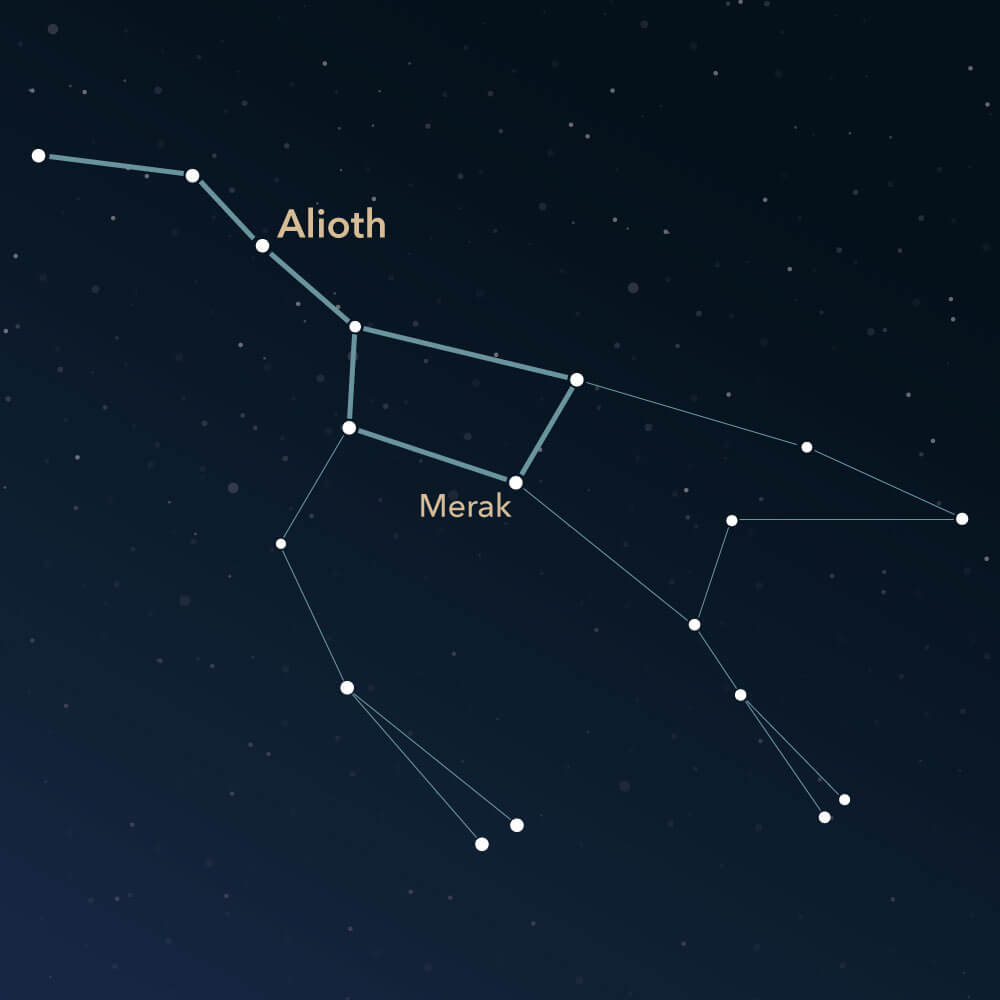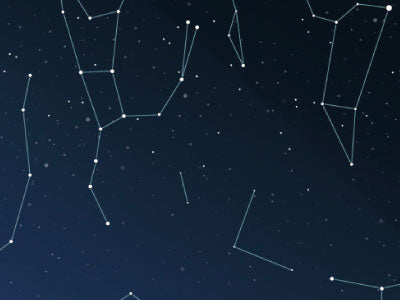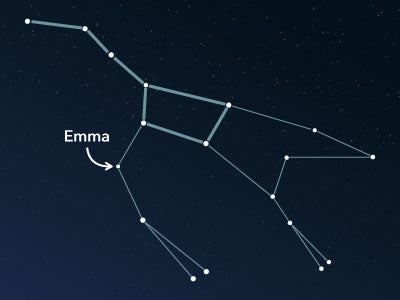The constellation Ursa Major
Characteristics
- Other names / Symbolism
- Great Bear, Big Dipper
- Hemisphere
- Northern hemisphere
- Visibility
- All year round
- Area
- 1280 deg²
- Brightest star
- Alioth (HIP number 62956)
- Specialties
- Spiral galaxies, planetary nebula

The Ursa Major, commonly known as Great Bear or Big Dipper, is one of the most famous star constellations in the night sky. It belongs to the 48 classic constellations described by the Greco-Roman astronomer Claudius Ptolemy. Within its area, there are some interesting deep-sky objects.
Hemisphere, visibility, and area
Ursa Major lies in the northern hemisphere and can be observed from the entire north half of the globe. South of the equator, it is only fully visible up to the 15th parallel. That corresponds to regions such as the south of Peru, northern areas of Australia, or Madagascar.
In northern latitudes, Ursa Major is circumpolar, meaning it is visible all year round. From more southerly locations, it is best observed in the months of April to June.
With an area of about 1,280 square degrees, Ursa Major is the third-largest constellation in the night sky. Only the constellations Hydra and Virgo are larger.
In many star charts, the constellation is visualized as a square and chain of stars, representing part of the bear's body and its long tail. This area is known as the "Big Dipper" and is very recognizable, making it easy to spot Ursa Major in the night sky. Because of this high recognizability, it is considered an asterism.
The brightest star in Ursa Major is Alioth (Latin: ε Ursae Maioris, Epsilon Ursae Maioris). It has an apparent magnitude of about 1.8 and is located approximately 83 light-years from earth.
The Ursa Major is nestled among eight other constellations in the night sky. These include the Draco, the Camelopardalis, as well as the Lynx and Leo Minor. The Leo, Coma Berenices, Canes Venatici, and the constellation Boötes also border Ursa Major.
Specialties in the constellation
Within the Ursa Major constellation are several spiral galaxies and a planetary nebula.
The most massive galaxy is the spiral galaxy NGC 3031, also known as M81 (Messier 81). The common name M81 comes from the French astronomer Charles Messier. M81 has an apparent magnitude of about 6.9 and is located approximately 12 million light-years away. The galaxy is estimated to contain 200 billion stars and has a diameter of roughly 82,000 light-years, making it slightly smaller than our Milky Way. M81 can be observed as a hazy patch, even with prism binoculars. It lies in the northern part of the constellation.

The planetary nebula M97 (Messier 97) is also known as the Owl Nebula. It is about 2,500 light-years away and can be seen as a round patch through a binocular or a small telescope. It is situated southeast of the star Merak (Latin: β Ursae Maioris, Beta Ursae Maioris).
History
Ursa Major is one of the oldest constellations and has been recognized in many cultures.
In ancient Egypt, the constellation was known as the "Thigh of Seth," an Egyptian deity. Other sources in which the constellation appears include the Old Testament and Aristotle's metaphysics. In the latter, Aristotle added five more stars to the classic seven stars to describe the constellation.
According to legend, the Roman Emperor Augustus was depicted with the constellation on his chest and belly, based on numerous birthmarks.
The Ursa Major also resonated strongly in literature and art. It inspired not only Shakespeare but also artists like Vincent van Gogh.
Mythology
In Greek mythology, there are different stories of the origin of the Ursa Major constellation.
In one version, Zeus fell in love with the nymph Callisto and had a son named Arcas with her. Driven by jealousy, Hera, Zeus's wife, transformed Callisto into a bear and banished her to the woods.
Years later, during a hunt, Arcas encountered his mother, still trapped in the body of a bear, and did not recognize her. Before Arcas could harm her, Zeus intervened to prevent her death.
He then placed mother and son in the sky as Ursa Major (Callisto) and Ursa Minor (Arcas).
Another source states that Zeus also transformed his son, Arcas, into a bear and hurled both bears into the sky, creating characteristic long tails. In this version, Hera is also jealous and asks two sea gods to deny the bears a bath in the waters. This resulted in the appearance that the two constellations would forever circle around the celestial pole and never sink toward the waters.
PublishedRead more interesting articles

An overview of all 88 constellations
Learn more about all 88 constellations and read interesting information about the mythology, visibility, and features.

Planetarium App
Discover the night sky with our planetarium app!
Available for iOS and Android.

Name a star in the constellation Ursa Major
Name a star in a constellation and create something that lasts for eternity.